Canadians Idle No more - we are one nation and one broken heart- We stand with our Dene and all the families including the 'lost son' - history - honour- dignity-/Our First People and First Settlers built our Canada/Our First Peoples - the first to sign the dotted line and 2 often the first to die..., CANADA IDLES NO MORE- we stand as one
Teen facing four counts of murder in Saskatchewan shooting
Police say a 17-year-old has been charged with four counts of first-degree murder and seven counts of attempted murder
Candles and flowers placed as a memorial lay near the La Loche, Sask., junior and senior high school on Saturday, January 23, 2016. A shooting Friday left four people dead.
JUST IN- MY FAV. NEWS SITE-EURONEWS- Stuck in ‘halfway place,’ remote Canadian community reels from shooting
By Julie Gordon and Rod Nickel
VANCOUVER/WINNIPEG (Reuters) – The remote, northern Canadian community where a shooter killed four people and injured seven on Friday has long struggled under the weight of poverty, high suicide rates and disadvantages that most of the country can hardly imagine.
The isolated town of La Loche, in the western province of Saskatchewan, and its neighbouring Clearwater River Dene Indian reserve, six hours away from the nearest airport, embody the dire prospects for Canada’s Aboriginals, also known as First Nations.
Unemployment stands above 20 percent in the community, suicide and addiction rates are high, homes are overcrowded and family violence is rife in the community which is mostly Metis, a culture with French and Aboriginal roots.
“If you know about this deadly mix of hopelessness and abuse and violence, and drugs and alcohol abuse, and racism and poverty, really it’s a perfect recipe for something like this to happen,” said Mark Totten, who spent five years working with Aboriginal youth in Saskatchewan, and is now a criminal justice professor at Humber College in Toronto.
Canada’s new Prime Minister Justin Trudeau in December promised a new “nation-to-nation relationship with First Nations peoples” and an inquiry into the high rates of missing and murdered Aboriginal women.
Trudeau, 44, was speaking after a report found the forcible separation of Aboriginal children from their families amounted to cultural genocide.
La Loche, set beside a lake and boreal forest at the end of a highway from southern Saskatchewan, one of Canada’s wealthiest provinces due to its reserves of crude oil, potash and uranium, has a checkered history of violence.
In 2010, a man was shot dead in broad daylight across the street from the local police detachment. A year later, a mob torched a police truck and attacked two police officers.
“Things are getting kind of bad,” said Sylvia Piche, 53, who grew up in La Loche before moving to Clearwater. “I’m afraid to even walk at night.”
Mass shootings are rare, however, even in Canada’s most desperate corners.
Canadian police said on Saturday that a 17-year-old man has been charged with four counts of first degree murder, seven counts of attempted murder and unauthorized possession of a firearm. He cannot be named due to his age.
Police identified the victims as Dayne Fontaine, 17, and Drayden Fontaine, 13, teacher Adam Wood, 35, and teaching assistant Marie Janvier, 21.
“My heart was shattered, the community was shattered,” said acting mayor Kevin Janvier, who was inaccurately reported to have lost his daughter in the school shooting.
In La Loche, which has a population of 2,600, 18 people committed suicide over a four-and-a-half year span to January 2010, the StarPhoenix newspaper said last year. It said the
annual suicide rate in the regional health district is the highest in the province.
“There’s not much future after you graduate,” said Raymond Dauvin, a long-time La Loche resident. “You have to leave town to work. And it’s difficult, because if you leave town you’re in an environment of other people who don’t speak Dene. In a way, it’s your nation up here.”
The tragedy will also raise questions about gun access in Aboriginal communities. While all firearms must be registered in Canada, the process is easier for Aboriginals who use shotguns for traditional hunting and youth under 12 can obtain access.
“Having a shotgun is a very important thing, because if you’re supporting your family with moose, maybe beaver pelts, deer, then you need guns,” said Humber’s Totten.
Still, Aboriginal communities will ask hard questions about gun security after the shooting, said Federation of Saskatchewan Indian Nations Chief Bobby Cameron, who represents more than 70 Indian bands in the province.
In the meantime, La Loche residents are caught between traditional and modern worlds, giving rise to “unimaginable” social problems that are symptoms of the loss of identity, said Ken Coates, director of the University of Saskatchewan’s northern development centre.
Elders who provide the last link to traditional Aboriginal life are dying, while television channels are easily available, offering a teasing window into an affluent southern world, he said.
“You’re stuck in this halfway place, which creates this odd (question) of, ‘Am I a northern person? Yes. But am I a Canadian in a full sense?’” Coates said.
(Editing by Amran Abocar, Diane Craft)
http://www.euronews.com/newswires/3133290-at-least-two-dead-suspect-held-in-canada-school-shooting-report/
BLOG:
Canada Military News: TEENS HAVE IT HARD DAMMIT!! As Margaret Mead once said, today our children are not brought up by parents, they are brought up by the mass media and dumb $$$ soulstealing decency imho-. The absolute terror of surviving teenage years/The quiet decent parents and grandparents nobody ever sees or hears/the monsters who have children and destroy them.... and the healing and surviving of teenagers to incredible, brilliant adults -the real stars of this world imho- Classified's THE DAY DOESN'T DIE /Jimmy Wayne's- It's Not Where uve been, it's where ur going...u are not a throwaway/Walk a little Straighter Daddy /newsreporting...reminders http://nova0000scotia.blogspot.ca/2016/01/canada-military-news-absolute-terror-of.html
History of the Denesuliné (Dene) in Northern Saskatchewan
Denesuliné (pronounced as Den-a-sooth-leh-na) or Dene of Northern Saskatchewan were once referred to as Chipewyan or Caribou Eaters (Ethen-eldeli or Et-en-eldili-dene) but they prefer their self-naming term, Denesuliné which means 'Human Beings.' Chipewyan, a term given to the Denesuliné by the Cree during the fur trade era means 'pointed toes.' Chipewyan is the term specific to Denesuliné who reside in the northern boreal forest while Dene or Athapaskan refers to all Dene in Canada.
The occupancy of the Denesuliné in Northern Saskatchewan can be traced through archeological evidence to approximately eight to twelve thousand years ago. Archeologists, anthropologists, and other academics speculate that the Denesuliné like other Aboriginal bands migrated into Canada through the Bering Straight. This theory speculates that Aboriginal peoples crossed a large ice/land mass from Asia into Canada at least 8,000 - 12,000 years ago.
Samuel Hearne was one of the first Europeans to come into contact with the Denesuliné (1769-72) while on an expedition for the Hudson's Bay Company to Coppermine River. He noted upon meeting the Denesuliné that "as their whole aim is to procure a comfortable subsistence, they take the most prudent methods to accomplish it; and by always following the lead of the deer, are seldom exposed to the griping hand of famine, so frequently felt by those who are called the annual traders."[1]
Apparently, Hearne lost his way in the bush and was rescued by a Denesuliné leader named Matonabbe. Matonabbe eventually became a guide and close friend of Hearne's and together they set out in search of copper that they did not find.
At the time of contact it is noted that Denesuliné were fierce enemies of the Caribou Inuit and the Plains Cree.
Geography
The Denesuliné in Northern Saskatchewan are situated on reserve lands that were designated through an adhesion to Treaty 8 in 1899 and Treaty 10 in 1906. Treaty 8 was signed between the Government of Canada and the Denesuliné in Blake Lake (Chicken 224, 225, and 226), Clearwater, and Fond du Lac. Treaty Ten was signed on July 20, 1906 between the Government of Canada and the Denesuliné of English River and Wollaston Lake.
Population
It is not known how many Denesuliné there were at the time of contact, but it is estimated there were approximately 250,000 Dene across Canada. A smallpox epidemic in 1781-1782 decimated approximately ninety percent of the Cree and Dene population.
In 2001, there were approximately 10,585 in Canada who identified as being of Denesuliné ancestry.
Language
The Denesuliné in Northern Saskatchewan belong to the Athapaskan linguistic group Na Dene. Linguistics refer to the Dene or Denesuliné dialect as Chipewyan. Denesuliné is spoken in the ' t' dialect with the exception of those in Fond du Lac who speak the 'k' dialect. In the past, Denesuliné used to identify each other by their language and "[i]f he can be understood, he is Chipewyan; if he cannot be understood, he is not Chipewyan."[2]
The Dene language remains a fairly strong language spoken in the various dialects across Northern Alberta, British Columbia, Saskatchewan, and Manitoba in Canada and into the United States where it is comprehensible to the Navajo. The Denesuliné language group is closely related to the Slave, Beaver, Dogrib, and Hare First Nations.
The 2001 Canadian Census reported there were "935" Denesuliné who claimed 'Chipewyan' as their mother tongue or first language. Overall, in 2001, the Canadian census indicates there were "10,585" Dene speakers in all of Canada. However, there may be as many as "15 000 DëneSu,liné / Chipewyan" speakers throughout Canada.[3]
Kinship/Social Structure
Denesuliné did not have any formal leadership or chief. They were referred to as acephalous societies or headless societies. Politically, they were loosely organized. Leaders or headmen when needed were chosen based on their knowledge and wisdom of the task at hand. For instance, organizing a hunting or raiding party. As a result, everyone limited powers to control or coerce one another. They did not have a rank and order system or election to choose leaders. In many other cases, the medicine man (Asegolia) took the role of making decisions for the group.
Family structure as well was loosely organized due to their frequent migration in search of caribou. They were referred to as 'hunting units' that consisted of two or more families who were related. Generally, "the hunting unit is based on a man and his son."[4] A son would also include a son-in-law.
The kinship and social structure of the Dene was interconnected to their relationship to hunting, their land, environment, and animals.
Marriages were arranged by the parents based on practicality or need of the hunting unit. In Denesuliné culture it was forbidden for a son-in-law to talk to his mother-in-law and vice versa. This is because it was believed that "the mother-in-law is the same as his wife was before he married her."[5]
Reciprocity or the sharing of resources (food, clothing, etc) was common among the Denesuliné. Everyone participated in and celebrated any hunt that occurred amongst the band. This reciprocity was generally not shared between the various bands of Denesuliné but rather between members within a band. Within the band few people went hungry because the Denesuliné shared their food resources with everyone.
Division of labour was by sex and age - Men would hunt and fish for big game while the women, elderly, and children hunted for small game and gathered berries.
Denesuliné men received respect from their community by being successful hunters. Men were also responsible for cutting and sawing wood while the children and dogs would be responsible for hauling and stacking the woodpile.
The role of the Denesuliné woman included sewing and tanning hides for clothes and tents, drying and smoking fish and meat, moving and setting up camp, and looking after the children and dogs.
Women were responsible for moving and setting up the tents (tipi) and camp. The site of the camp was generally selected in the location where there was a successful hunt. There she would prepare the meat for drying or fish for drying.
Women were responsible to ensure that the fish that was caught was smoked or sun dried for preservation.
The children were responsible for hauling water, gathering wood, and picking berries. Older siblings were responsible for taking care of their younger siblings. Children in many of the northern Denesuliné communities were required to haul water up into the 1990s.
Aside from the school and teacher's residence, Health Center, community hall, and church, no other building or house had running water or sewer systems until 1994/95.
Denesuliné children in Black Lake hauling water in the early 1970s
Worldview
Denesuliné believed that spiritual powers were received through dreams and visions.
Medicine men (Shaman) would tell stories about their spiritual connection to animals such as wolves, who were believed to hold special powers. Consequently, the animals that were held in high regard were not killed, harmed, or consumed in any way. Denesuliné made their fishnets out of sinew or babiche with special care so as to ensure a successful hunt. According to Samuel Hearne, superstition was highly involved in making fishnets and if certain protocol were not followed the result would be an unsuccessful hunt. In his journals he stated:
When they make a new fishing-net, which is always composed of small thongs cut from raw caribou-skins, they take a number of birds' bills and feet, and tie them, a little apart from each other, to the head and foot rope of the net, and at the four corners generally fasten some of the toes and jaws of otters and minks...They frequently sell new nets, which have not been wet more than once or twice, because they have not been successful.[6]
Pictures of 'Roderick Yooya' making a fishnet
Denesuliné believed in reincarnation after death. They believed that a deceased person's soul could consume that of a young child, therefore, children were forbidden to come into contact with a deceased person such as at a funeral.
They took great care when burying their deceased. They were buried in a graveyard that was only for Denesuliné. Protective fences or houses were placed around their grave to keep the deceased person's spirit contained and to keep out trespassers and vandals.
Pictures of a Denesuliné gravesite in Fond du Lac
Education
For many Denesuliné, their education was gained through their culture and traditions in hunting, fishing, and the land. However, it was required by law for all children in Canada to go to school. Because many of the smaller remote communities did not have resources to build schools, the children were taken to various residential or mission schools set up over the Province. Residential schools were government-funded and church-run institutions generally operated by Missionaries of Catholic or Anglican faith. One of the last residential schools in Canada closed in 1985. It was not unusual for children to leave their family and community at the age of six and return home a stranger at age sixteen.
Economy
The Denesuliné at the time of contact were hunting and gathering societies whose main mode of subsistence was trading furs, moose (Alces alces), caribou (Rangifer tarandus caribou), and fish (whitefish) with Aboriginal groups they were not in conflict with. They first came into contact with European fur-traders as early as 1717 when the Hudson's Bay Company erected a trading post at " Fort Prince Wales at the mouth of the Churchill River." [7]
Hunting, fishing, and trapping continue to be a way of life as well as a supplemental way of life for many Denesuliné. They continue to migrate in search of food while maintaining a sedentary lifestyle.
Transportation
Before the introduction of modern transportation the Denesuliné relied on snowshoes, canoes, and dog teams or sledges as their main mode of transportation. When snow machines were introduced, the Denesuliné found them to be more efficient, but they preferred their dog teams for several reasons. In the harsh winter the snow machines were always breaking down and they did not have the resources to repair or maintain them. The price of gasoline was also expensive and could not be obtained while they were in the bush hunting. As a result, the Denesuliné preferred their dogs because "in a real pinch, you cannot eat a snowmobile." [8]
The dog was a very important feature of transportation for Denesuliné. The introduction of dogsleds began in the mid 1850s but it is thought that Denesuliné traded dogs long before with the Caribou Inuit.
The Government through the Department of Indian Affairs, kept careful records of all dogs owned by each person in the various Denesuliné communities. The records in the early 1970s indicate that the dog population was higher than the Denesuliné population in Black Lake. The above survey shows there were 461 Denesuliné and 581 dogs.
Dog sleds were used to transport animal carcasses after a successful hunting expedition. The introduction of snowmobiles and all terrain vehicles has reduced, if not eliminated the workload required of the dogs.
These pictures show a dog team pulling a caribou
Denesuliné also relied their dogs to alleviate their workload by having the dog teams transport cords of wood from the bush to their house. At the time this picture was taken in 1971, firewood was the main source of heat in Denesuliné communities.
Into the 1970s, few people in Black Lake/Stony Rapids had motorized vehicles. This may be due in part to the fact that there are no year round roads into the community. In 2004, aside from a temporary winter road, there remains to be no year round road access into Black Lake.
This transportation survey conducted in Stony Rapids between in 1971 shows all of the people living in Stony Rapids including Denesuliné who owned vehicles.
Air transportation was first introduced to the Denesuliné in 1929.
Endnotes
[1] Henry Sharp. The Kinship Systems of the Black Lake Chipewyan. Dissertation. Drake University, 1973:155
[2] Henry Sharp. The Kinship Systems of the Black Lake Chipewyan. Dissertation. Drake University, 1973:3.
[3] Excerpt from: "Aboriginal languages of Canada" by Eung-Do Cook and Darin Howe, Chap. 9 in W. O'Grady and J. Archibald (Eds.), Contemporary Linguistic Analysis, 5th edition. Toronto: Addison Wesley Longman, 294-309.
[4] Henry Sharp. The Kinship Systems of the Black Lake Chipewyan. Dissertation. Drake University, 1973:156.
[5] Ibid:200
[6] Samuel Hearne. Arctic Dawn: The Journeys of Samuel Hearne <http://web.idirect.com/~hland/sh/shtoc.htm>
[7] People of Northern Saskatchewan. <http://www.kayas.ca/peopledene.html>
-----
PAGE 2
Denesuliné in Treaty Eight:
Black Lake, Fond du Lac, and Clearwater River (La Loche)
History:
The Denesuliné in and near Black Lake, Saskatchewan were formerly known as the Stony Rapids Denesuliné. They now refer to themselves as the Black Lake Denesuliné Nation. 'Tazen tuwé' is the self-naming term for Black Lake and literally means Black Lake. The self-naming term for Stony Rapids is 'Deschaghe' which means 'settlement on the other side of the Rapids.' [9]
Location:
The community of Black Lake is located approximately 170 kilometres southeast of Uranium City. Aside from Fond du Lac, it is Saskatchewan's most northern community. There is no year round access road into Black Lake due to its remote location. The nearest airport to Black Lake is 16 miles away in Stony Rapids.
The total land base allotted to the Black Lake Denesuliné Nation through an adhesion to the Treaty 8 agreement in 1899 is 32,819 hectares. There are three bands of Black Lake Denesuliné who share the allocated reserve land. They are Chicken No. 224, Chicken No. 225, and Chicken No. 226. David Thompson of the Hudson's Bay Company first surveyed the area from Reindeer Lake, Wollaston Lake, and Black Lake in 1796.
Population:
The population in Black Lake has risen steadily over the past 70 years. In 1932, Father Eugene Picard of the Roman Catholic Mission in Black Lake reported there were "230 people or 65 families from the Black Lake region." [10]
By 1970, there were "535" Denesuliné living in Black Lake. This is an increase of "250%" over a span of "forty-three years" [11]
In 1997, there were approximately "four thousand" Denesuliné living in Stoney Rapids, Fond du Lac and Black Lake.
As of 2005, there are approximately 1699 Denesuliné living in the community of Black Lake, SK.
Language:
Though there was a significant language loss that began in the 1970s, the use of Denesuliné is now very prominent in everyday use in Black Lake. In fact, Denesuliné is the first language taught to infants and children. [12]
In 1996, of the "1,055" Denesuliné registered in Black Lake, "1005" reported 'other' language as their mother tongue or first language.[13] The 'other' language refers to Denesuliné or Chipewyan. English is considered a second language in Black Lake.
Education:
The Black Lake school that was built in the early century has been replaced a newly modernized and up to date facility. The newly named "Father Porte Memorial Denesuline School has approximately 400 students enrolled. Eight of [the] 21 educators are band members and…[they have] 16 teacher assistants who participate in daily classroom activities."[14]
Chipewyan children at Black Lake School, Black Lake, Sask. 1969, 1971
Religion:
Since the arrival of the newcomers, many Denesuliné have adopted the Roman Catholic faith. The Roman Catholic Church built their first church in Black Lake in 1951.
Today many Denesuliné are relearning and practicing traditional forms of spirituality. The sweat lodge is one of the spiritual ceremonies being re-introduced back into Denesuliné spirituality.
Organization:
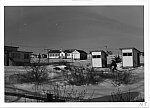
Black Lake Band Council Hall centre; Old Nursing Station left; Indian Affairs storage shed right, 1971
An elected Chief and 5 Council govern the Black Lake Denesuliné Nation. They are affiliated to the Prince Albert Grand Council and the Federation of Saskatchewan Indian Nations.
Economy:
Traditionally, Black Lake Denesuliné were nomadic hunters who followed the large herds of Beverly caribou in search of food. Hence their name 'Caribou Eaters.'
Fishing was an important aspect of subsistence for the Denesuliné and their dogs. Whitefish was generally saved for human consumption while other fish such as suckers and walleye were saved for the dogs.
Late summer was the best time for fishing as it was close to freeze-up. The collected meat and fish could be frozen during this time. Otherwise, the fish and meat was preserved through sun drying or smoking in the spring and summer months. The process of drying fish was necessary because freezers were unavailable in Black Lake region.
Denesuliné drying fish in the summer time
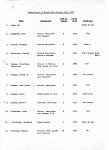
A census of occupations in Black Lake by U of S Professor R.M. Bone in 1971 indicated that trapping was still a way of life for the majority of Black Lake Denesuliné.
In fact, in the early 1970s, there was only one freezer that was shared by everyone in the community. The Band Council and Priest were responsible for holding the key and allowing people access to the freezer. This became troublesome as they had no set hours and people would ask to access the freezer at any given hour.
Into the 1970s, hunting and trapping continued to be a major source of income and subsistence for many Denesuliné from Black Lake. Other jobs that were available to those in Black Lake were mainly seasonal jobs such as hunting or fishing guides, diamond drillers, or fire fighters.
Today, many Denesuliné participate in the work force full time in Education, management, clerical, mining, Band administration, Social Welfare, Health, construction, and Government.
The community of Black Lake received $2,2289,834.00 in Government transfer payments in 2004.[15]
The average income in Black Lake is $29,247.00 per annum.
Fond du Lac
History:
Fond du Lac is one of the oldest, most northern remote communities in Saskatchewan. The North West Company first established Fond du Lac as trading post in the late 1790s to early 1800s. However, they abandoned the site in '1804' after numerous attacks and massacres which were apparently initiated the by ' Chipewyan.' The Hudson's Bay Company re-built the post in '1819.'
When the HBC and the NWC merged in 1821, they abandoned the site to a more feasible location in Fort Chipewyan. " Jose Mercredi," who was in charge of the previous NWC post claimed to be the founder of present day Fond du Lac when he established the settlement in '1845.'
In '1851,' the Hudson's Bay Company built their post in present day Fond du Lac and it "has remained in operation at Fond du Lac from (at least) 1851 to contemporary times, when its stores have transformed into the "Northern" company."[16]
Location:
This small isolated community of Fond du Lac is situated approximately fifty miles from Uranium City. It is a fly in only community.
Population:
Fond du Lac is predominately a Denesuliné and Metis community. There were approximately 642 Denesuliné in Fond du Lac in 2005. This number is down from 751 in 1996. There was an even distribution of approximately 340 men and 340 women in Fond du Lac in 2005.
Language:
The use of Denesuliné as a first language is rapidly deteriorating in the community of Fond du Lac. Denesuliné speakers in Fond du Lac speak the k dialect.
Education:
Denesuliné in Fond du lac have a high incidence of school dropout rates. In the age category of 45-65 there are 75% who have not completed high school or secondary education.
Religion:
The Denesuliné in Fond du Lac are predominantly Catholic with a few practicing the Protestant faith while the others subscribe to traditional spirituality.
Organization:
The Fond du Lac Denesuliné First Nation are politically guided by Section 11 of the Indian Act (1876). They have a customary Chief and Council election system in place. They are affiliated to the Prince Albert Grand Council in Prince Albert, Saskatchewan.
Economy:
In 1931, Fond du Lac boasted "3 stores…and gasoline." [17] Today, Fond du Lac has a new gas bar, convenience store, and fast food outlet
Fond du Lac's main source of economy is through mining and mineral extraction.
The community of Fond du Lac received $6,594,191.00 in Federal transfer payments in 2004.
The average income in Fond du Lac is $33,645.00 per annum
Clearwater River (La Loche)
History:
The Clearwater River Dene Nation consists of three bands including reserves 221 and 223. The Clearwater River Dene Nation used to be known as the 'Big C.'
In 1778, Peter Pond established the first trading post in the area of Clearwater.
Location:
The Clearwater River Dene Nation is located near La Loche, Saskatchewan. Clearwater is approximately 350 kms from the nearest service center in Meadow Lake. The reserve land that was allotted during the signing of Treaty Eight covers approximately 9,500 hectares.
Population:
1471 were registered with the Clearwater River Dene Nation in 2005. Just over half (813) of the Band population lives off reserve.
There are only 10 persons registered in reserve 223 of the Clearwater River Dene Nation.
Language:
Denesuliné is the main language spoken in Clearwater with English as a second language
Education:
Just over 50% of the population in Clearwater does not have any type of secondary or post-secondary training.
Religion:
Occupants of Clearwater practice traditional forms of spirituality along with the Roman Catholic faith. More recently, sweat lodges are being introduced as traditional forms of spirituality.
Organization:
Clearwater Denesuliné First Nation are governed by a Chief and Council that is mandated by Section 10 of the Indian Act (1876). They are affiliated with the Meadow Lake Tribal Council Program Services INC (MLTC Program Services INC) in Meadow Lake, Saskatchewan.
Economy:
The unemployment rate at La Loche is very high. The mine manager reported "about 250 people had worked at the mines during the past 15 years."
The average income in Clearwater is $27,315.00 per annum. [Source]
Endnotes
[9] Article: Post Reserve: Present Day Reserves in Saskatchewan. Saskatchewan Indian Cultural Center Heritage Website. Saskatoon, Saskatchewan. <http://www.sicc.sk.ca/heritage/ethnography/dene/territory/postreserve.html>
[10] The Geographical Movements of the Chipewyan Indians of the Black Lake Region from the Winter of 1931 to the Summer of 1932. University of Saskatchewan Archives: R.M. Bone fonds (240)
[11] Henry Sharp. The Kinship Systems of the Black Lake Chipewyan. Dissertation. Drake University, 1973:25.
[12] Excerpt from: "Aboriginal languages of Canada" by Eung-Do Cook and Darin Howe, Chap. 9 in W.
[13] 2001 Community Profile - Chicken 224. Statistics Canada <http://www.statcan.ca>
[14] ECN: Black Lake First Nation Education. <http://www.indianclaims.ca/english/pub/proceedings.html>
[15] Wilfred Lentz, Chartered Accountant. Black Lake. Schedule of Government Funding, March 2004. < Black Lake20032004.pdf>
[16] David Meyer. "The Fur Trade Period" in Human History in Far Northern Saskatchewan.<http://canoesaskatchewan.rkc.ca/arch/archhist.htm>
[17] R.M. Bone fonds (240). Recollections of Father Eugene Picard of the Stony Rapids Chipewyans, 1931-1934. University of Saskatchewan Archives, 28 July 1971:15
----
PAGE 3
Denesuliné in Treaty Ten:
Birch Narrows (Turnor Lake), Buffalo River (Dillon), English River (Patuanak/La Plonge), and Hatchet Lake (Wollaston Lake)
Birch Narrows (Turnor Lake)
History:
Originally called the Peter Pond band, the Buffalo River Dene Nation (8259.7 h) and the Birch River Narrows Dene Nation (2765.5 h.) were divided into two bands in 1972. Both bands lived in and near Buffalo Narrows before moving to Buffalo Rivers near Dillon and Birch Narrows near Turnor Lake, Saskatchewan.
Buffalo Narrows, 1971- Home of Peter Pond Band before 1972 split into Birch Narrows Dene Nation and Buffalo River Dene Nation
Birch Narrows belongs to Treaty Ten signed in 1906.
Location:
Birch Narrows is located approximately 270 miles from Meadow Lake, which is the closet center with all amenities. They are located about 55 miles from Buffalo Narrows and both communities remain closely connected.
Population:
The population in 2005 for Birch Narrows was 596. Approximately two thirds of the registered population in Birch Narrows resides on reserve.
Language:
The majority language spoken in Birch Narrows is English. It is reported that Denesuliné is rarely spoken and is a language considered in crisis. There appears to be very little done at this point to revitalize the language. This could be attributed to their remote location.
Education:
Birch Narrows Dene Nation has its own school, the Birch Ridge Community School. They accommodate both First Nation and Metis students from kindergarten to grade nine. There are approximately 170 students attending the school on a full time basis.
Birch Narrows has recently taken control of their Educational management from the Northern Lights School Division. There are plans in the very near future to construct a brand new state of the art school in Birch Narrows.
Birch Narrows has a high number of people attending post-secondary institutions across the province and across the country.
Religion:
The Roman Catholic faith is the most practiced religion in Birch Narrows with small minority practicing traditional forms of spirituality.
Organization:
Birch Narrows Dene Nation are governed by a Chief and four Councilors who are mandated by a custom electoral system under Section 10 of the Indian Act (1876). They are affiliated to the MLTC Program Services INC.
Economy:
The community of Birch Narrows gains much of their revenue through tourism. The band owns and operates a successful fly-in fishing camp for tourists and hunters.
The Birch Narrows Dene Nation as with almost all other reserves in Canada receives a transfer payment from the Federal Government. In the case of Birch Narrows, The payment is made to the MLTC Program Services INC and then distributed to the Birch Narrows Band Office. In 2004, Birch Narrows received $3,345,728.00 from the Federal Government in transfer payments.[18]
Buffalo River (Dillon)
History:
(see Birch Narrows history) It is thought the Buffalo River Dene moved from the far north in order to be closer to the fur trading Post at Fort Churchill in the early 1700s.[19] Peter Pond, Thomas Frobisher, and Alexander Mackenzie and Sir John Franklin are some of the well-known explorers known to pass through Buffalo Narrows in the 1700 and 1800s.
Location:
The Denesuliné of the Buffalo River Dene Nation are located on the banks of the Buffalo River between Dillon Lake and Peter Pond Lake in northern Saskatchewan. Their adhesion to Treaty 10 allotted a land base that comprises of 8,259 hectares.
Population:
In 2005 there were 1097 members registered with the Buffalo River Dene Nation. Approximately half of the population resides off reserve.
Language:
The Denesuliné language in the community of Buffalo Rivers is nearly extinct and is considered 'a language in crisis.'
Education:
The school board has introduced the Denesuliné language in their school curriculum in the hopes of increasing the number of Denesuliné speakers in the community.
Religion:
The majority of members of Buffalo River Dene Nation practice the Catholic faith with a small number practicing Protestant. There are few who follow traditional forms of spirituality.
Organization:
Buffalo River Dene are governed by an elected Chief and 5 Councilors. They are affiliated to MLTC Program Services INC.
Economy:
The average income in the community of Buffalo River is $30,837. Many of the employment opportunities arise from the Band Office, labour force, manufacturing and construction industries, wholesale and retail trade, Health and education, and sales and service occupations.
English River (Patuanak/La Plonge)
History:
The English River Denesuliné were previously known as the Grassy Narrow Dene or the 'Polar House People.' There are seven bands of First Nation who belong to the English River First Nation; La Plonge near Beauval (9487.2 h), Wapachewunak near Patuanak (1967 h), Ile A La Crosse (6 h), Elak Dase (1390.5 h), Knee Lake (487.2 h), Dipper Rapids (831.3 h), and Primeau Lake (1690 h). These predominantly Denesuliné First Nation communities are located in the far northwest region of Saskatchewan. Together these seven reserves cover an area of approximately 12,492 hectares.
Patuanak was once the location of the Hudson's Bay Company store as it was central to Denesuliné from all over who traded furs.
Location:
Members of English River Denesuliné Nation reside in and near Patuanak, Saskatchewan, which is located west of the Shagwanew Rapids on the Churchill River. The community is situated 50 km from the nearest service center in Meadow Lake and 350 km from Prince Albert.
Population:
There was a total of 1283 registered through the English River Band in 2005. Approximately half of the population lives off reserve.
Wapachewunak reserve has has a population of 434 and La Plonge has a population of 120 of which both these numbers are included in the total census for English River.
Language:
Denesuliné is the first language spoken in English River with English being a second language.
Education:
The first public school in Patuanak was built in 1968. This is the time frame when Denesuliné families began moving from the bush to be closer to the school. Before the school was built the children were sent to the residential schools at Beauval and Ile a la Crosse.
Religion:
Most members of the English River Denesuliné First Nation adhere to the Roman Catholic faith with a small number adhering to Protestant. The first Roman Catholic Church was built in Patuanak in 1916 by Father Louis Moraud who operated it until his death in 1965 built.
Organization:
English River has a Chief and six Councilors to oversee the daily governance of the people. Chief and Council is mandated by Section 10 of the Indian Act (1876). They are affiliated with MLTC Program Services INC.
Chief William Apisis, Chief of the original Grassy Narrow Dene (English River First Nation) signed Treaty Ten in 1906 on behalf of his people. Apparently, "Apisis requested that arrears in annuity payment be provided for all treaty Natives, extending back to the time the first treaties were signed (presumably referring to Treaty One)."[20] There is no mention in Treaty Ten documents to show that Treaty members were retroactively paid.
Economy:
The economy in English River is self-sufficient with many members employed at the Band Office, the Health Center, Education, Broadcasting (local radio station), and in the service industry.
English River owns and operates 'New North,' ' Tron Power,' and 'the Cree Lake Fishing Camp.'
The average income for English River is $30,639.00 per annum. [Source]
Denesuliné in Wollaston Lake
History:
Hatchet Lake was allotted 11, 020 hectares of land through an adhesion to Treaty Ten in 1907.
"In 1796 David Thompson of the HBC surveyed the route from Reindeer Lake through Wollaston Lake, to Black Lake and Lake Athabasca. Here, he discovered a stake set up by Turnor in 1791." [21]
Location:
The Hatchet Lake Denesuliné Nation is located near Wollaston Lake, Reindeer Lake, and Seal River near the Manitoba border. This group of Denesuliné followed the Kaminuriak caribou herds in search of food.
There is no year round road access into Hatchet Lake. There is however, an ice road built across Wollaston Lake to Hatchet Lake in the wintertime and a barge in the summertime. There is a proposal put through in March 2005 to the Federal and Provincial Governments to build a year round road into Hatchet Lake.
There is an airstrip in Wollaston Lake that is easily accessible to Hatchet Lake First Nation but the cost of transportation is very high.
The nearest city center is approximately 480 km away in Prince Albert.
Population:
In 1974, there were 347 residents in Wollaston Lake of which 282 were of Denesuliné descent.[22]
In 2005 the population has increased to 1333 citizens enrolled with the Hatchet Lake Denesuliné Nation. Of the all Denesuline communities they have the highest concentration (1000) of their members residing on reserve.
Language:
The main language spoken in Hatchet Lake is Denesuliné with English as a second language. The school in Hatchet Lake employs a full-time language teacher. Children as well as adults speak Denesuliné on a daily basis.
Education:
Hatchet Lake has an elementary school, the Father Megret Elementary School, which goes up to grade eight and a high school, also named after Father Megret that goes from grades eight to twelve.
Teaching the Denesuliné language to students of all ages is part of the school curriculum.
Religion:
The religious affiliation in Hatchet Lake is a combination of the Roman Catholic and Protestant faith with a minority practicing traditional forms of spirituality.
Organization
Hatchet Lake Denesuliné Nation has a Chief and five Councilors who are elected through band election. They are mandated through Section 11 of the Indian Act (1876). They are affiliated with MLTC Program Services INC.
Economy:
The economy in Hatchet Lake is steadily improving. Due to its remote location and inaccessibility to the community, the cost of living and transportation is very high.
They have recently built new houses and completed upgrades to other houses.
"The Hatchet Lake Development Corporation has also entered into an agreement with the Saskatchewan Department of Highways to do maintenance work for the airport, local roads, and operation of the barge."[23]
They have constructed a Day Care that accommodates 30 children up to the age of five.
Hatchet Lake Denesuliné Nation received $9,629,827 in Government transfer payments in 2004.[24]
Treaty Initiatives
Black Lake, Fond du Lac, and Hatchet Lake First Nations submitted a Specific Claim to the Office of the Treaty Commissioner in 1993 over a reneged fiduciary duty of treaty rights. This claim is known as the Athabasca Denesuliné Inquiry and includes First Nations from Treaty 8 and 10. The Government maintains that "the Denesuliné surrendered all their rights and interests in lands north of the 60th parallel when they signed adhesions to Treaties 8 and 10 in 1899 and 1907" while the Denesuliné "maintain they continue to have treaty rights to hunt, fish, and trap throughout all their traditional territories, which includes lands in the Northwest Territories, above the 60th parallel."[25] Based on the Government's argument and stance on the original treaty negotiation, the Black Lake Denesuliné and Fond du Lac claim was unsuccessful.
Members affiliated to MLTC Program Services INC. put forth a claim to the Canadian Government for Self-Government. In 2001 they reached a Comprehensive Agreement-in-Principle. Each group will draft their own Constitution that will result in the ability for the different First Nations to create policy to manage their daily affairs. This claim is ongoing.
Endnotes
[18] Lorne Horning, Charted Accountant. Birch Narrows Dene Nation Auditor's Report and Schedule of Federal Funding, May 2004:3. <Birch Narrows First Nation20032004.pdf >
[19] A History of Buffalo Narrows, Saskatchewan <http://www.jkcc.com/evje/history.html>
[20] Kenneth S. Coates. Negotiating the Treaty. Treaty Research Report Treaty No. 10 (1906) Treaties and Historical Research Centre Indian and Northern Affairs Canada, 1986.
[20a] Editor's note: The information about the source of Wollaston Lake's name - that it was likely named for a township in Hastings County, Ontario - is incorrect. Based on research by Bill Barry, the name honours "George Hyde Wollaston, a member of the governor's committee of the Hudson's Bay Co. at the time the lake was visited and named by Peter Fidler in 1807" (People Places: Contemporary Saskatchewan Place Names, 2003)
[21] David Meyer. Human History in Far Northern Saskatchewan.<http://www.lights.com/waterways/arch/archlist.htm>
[22] Community Profile of Wollaston Lake, Sask. R.M. Bone fonds - MG 240 Box 5 I. Northern Sask. Housing Needs Survey. A. General files. Wollaston Lake. Community data - 1971-1975. University of Saskatchewan.
[23] The Hatchet Lake Denesuliné Nation: Community and Economic Development. <http://www.sicc.sk.ca/bands/bhatch.html>
[24] Wilfred Lentz, Chartered Accountant. Hatchet Lake Denesuliné Nation. Schedule of Government Funding, March 2004. <Hatchet Lake20032004.pdf>
[25] Athabasca Denesuliné Inquiry Into the Claim of the Fond du Lac, Black Lake, and Hatchet Lake First Nation. Indian Claims Commission <http://www.indianclaims.ca/english/pub/proceedings.html>






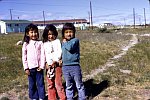


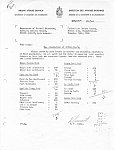
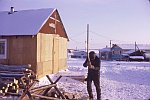
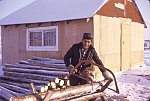
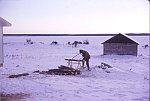
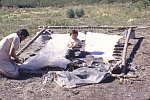
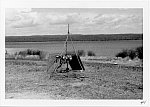
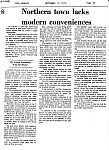

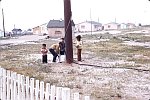
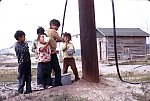
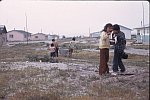
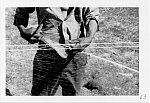
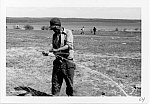


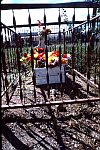

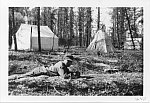
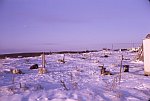

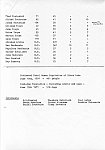
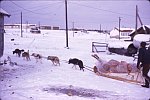
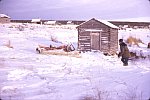
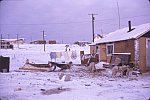
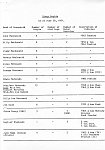
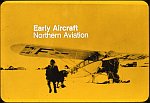
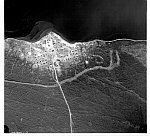
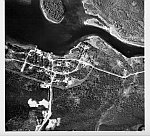

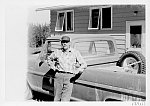
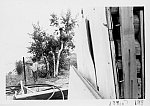

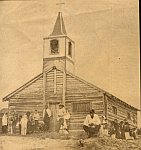
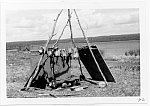
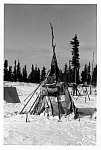
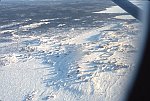
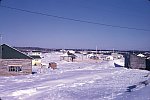

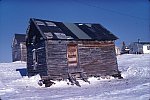
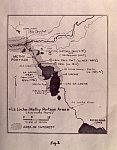
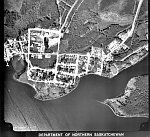
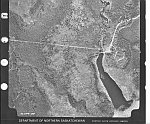
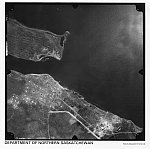
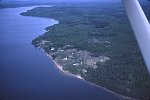
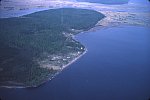
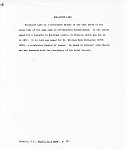
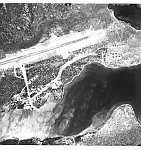
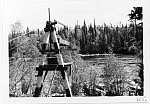























No comments:
Post a Comment
Note: Only a member of this blog may post a comment.